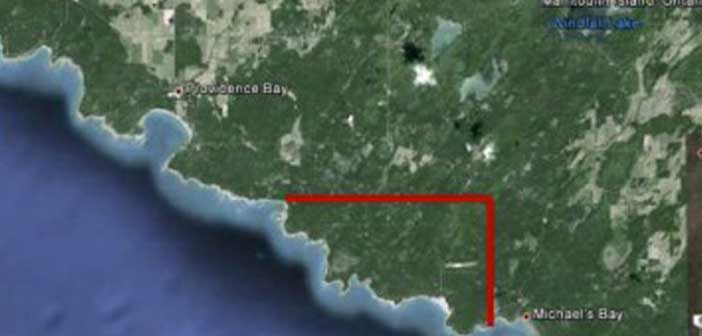MUSKOKA—It is expected that the proposed merger of Holcim Ltd. and Lafarge Sa will take place in 2015, but at this point there has been no confirmation on how this will affect the current Lafarge operations on Manitoulin Island.
Regan Watts, company spokesperson and director of communications for Lafarge Canada, told the Recorder from his Muskoka office in a recent interview, “the short answer is that the deal has not been completed as of yet, but is being looked at for completion in the first half of 2015.”
Mr. Watts would not comment at this time as to how the operations on Manitoulin Island will be affected by the merger, as these type of details haven’t been worked out as of yet. However, he did note it is business as usual.
Mr. Watts noted the proposed merger was announced on April 7, as both Holcim Ltd. and Lafarge SA confirmed that they will merge to form the world’s biggest cement maker in a deal with significant market concentration implications in Canada and other countries. As the Financial Post reported in its April 7 edition, the two companies are already among the world’s largest suppliers of cement, crushed stone and sand and gravel. In combining into a new producer with annual revenue of US $40 billion, management of the two companies believe that they will be required to sell assets representing about 18 percent of that revenue to satisfy competition regulators.
In Canada, Lafarge and Holcim together employ about 9,000 people and hold about half of the cement market, according to a 2008 estimated published by the Cement Association of Canada. The industry is centered in Ontario and Quebec.
Montreal-based Power Financial Corp, a holding company that has interests in insurer London Life among others, has an indirect stake in France-based Lafarge through Groupe Bruxelles Lambert GBL.
As Lafarge’s largest shareholder with a 21 percent stake, Groupe Bruxelles Lambert is backing the merger proposal, saying the combined company will benefit from a platform of growth of unrivalled quality and considerable value creation potential,” according to the Financial Post. GBL said it would own about 10 percent of the new company.
It was further reported the merger of Jona, Switzerland-based Holcim and Paris-based Lafarge comes after the global recession peeled away demand for building materials and forced some companies to run their operations at a loss. The merger partners believe their bond will lead to cost savings and efficiencies of more than 1.4 billion Euros (US $1.9 billion).
The Recorder has learned that under the merger agreement, Lafarge shareholders would receive one Holcim share for every Lafarge share and Holcim investors would end up with 53 percent of the group. The merged business will be based in Switzerland and listed in Zurich and Paris.
The Financial Post reported that the companies together have about 5-billion Euros (US $7.8 billion) in annual sales in North America, according to a management presentation prepared for investors. That makes it the third-largest region in importance behind Europe and Asia.
Between the two of them, the companies are present in 90 countries. The two companies are already among the world’s largest suppliers of cement, crushed stone and sand and gravel and Lafarge has a number of operations on Manitoulin Island, including a massive quarry operation at Meldrum Bay and a deep water terminal at Birch Island where Portland cement powder is delivered for resale to other manufacturers of concrete and concrete products in addition to Lafarge’s own array of ready mix plants, including one located at M’Chigeeng.
The new combined producer would have an annual revenue of about US $40 billion and according to media reports, the management of the two companies believe they will be required to sell assets representing about 18 percent of that revenue to satisfy competition regulators in the major markets the companies now serve.
The merger will have to meet the concerns of 15 competition authorities worldwide and roughly two-thirds of the assets will need to be divested by the two giants would be located in Europe. Assets in Canada, the United States, Brazil, India and China may also be sold to meet the regulatory concerns.





